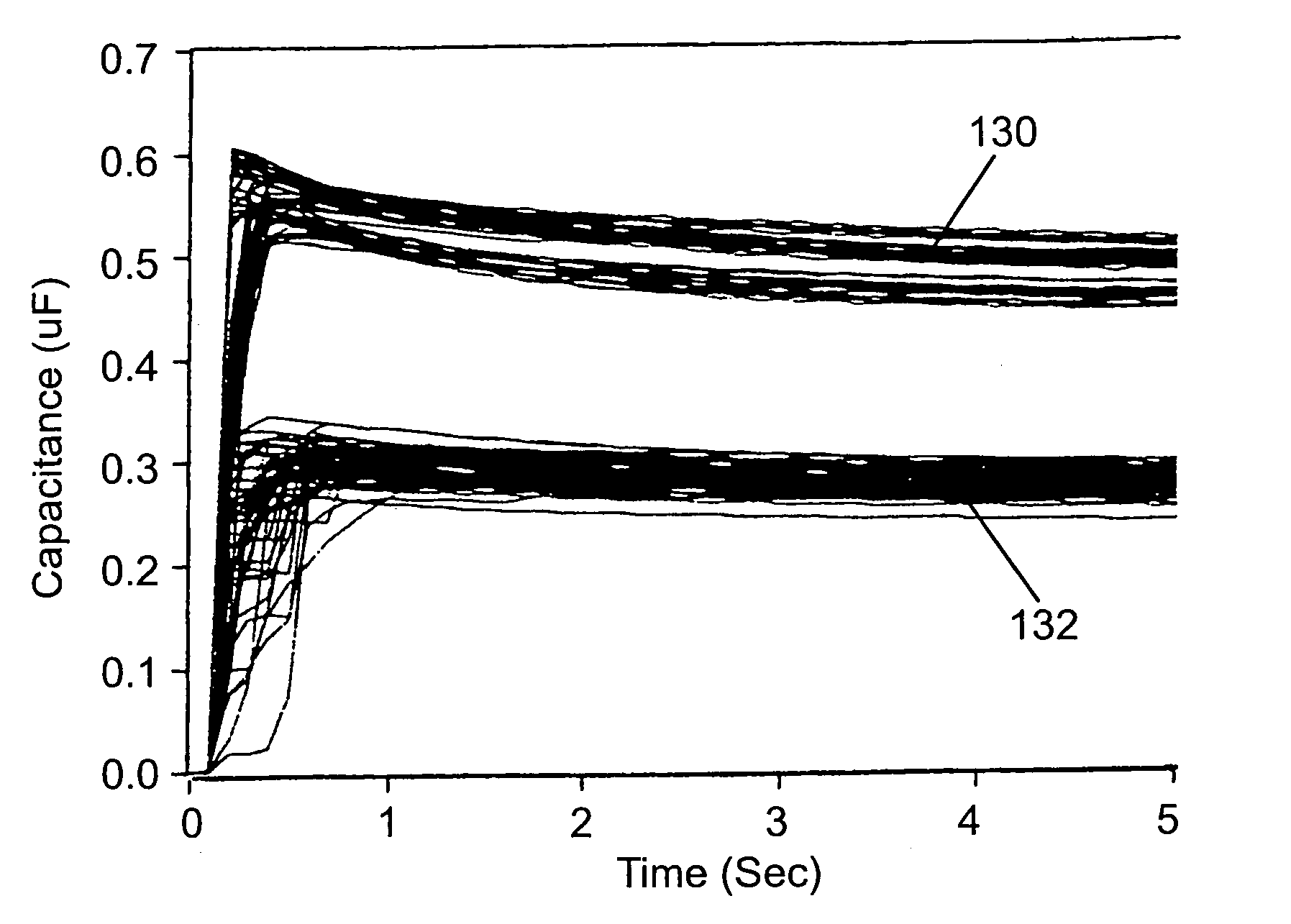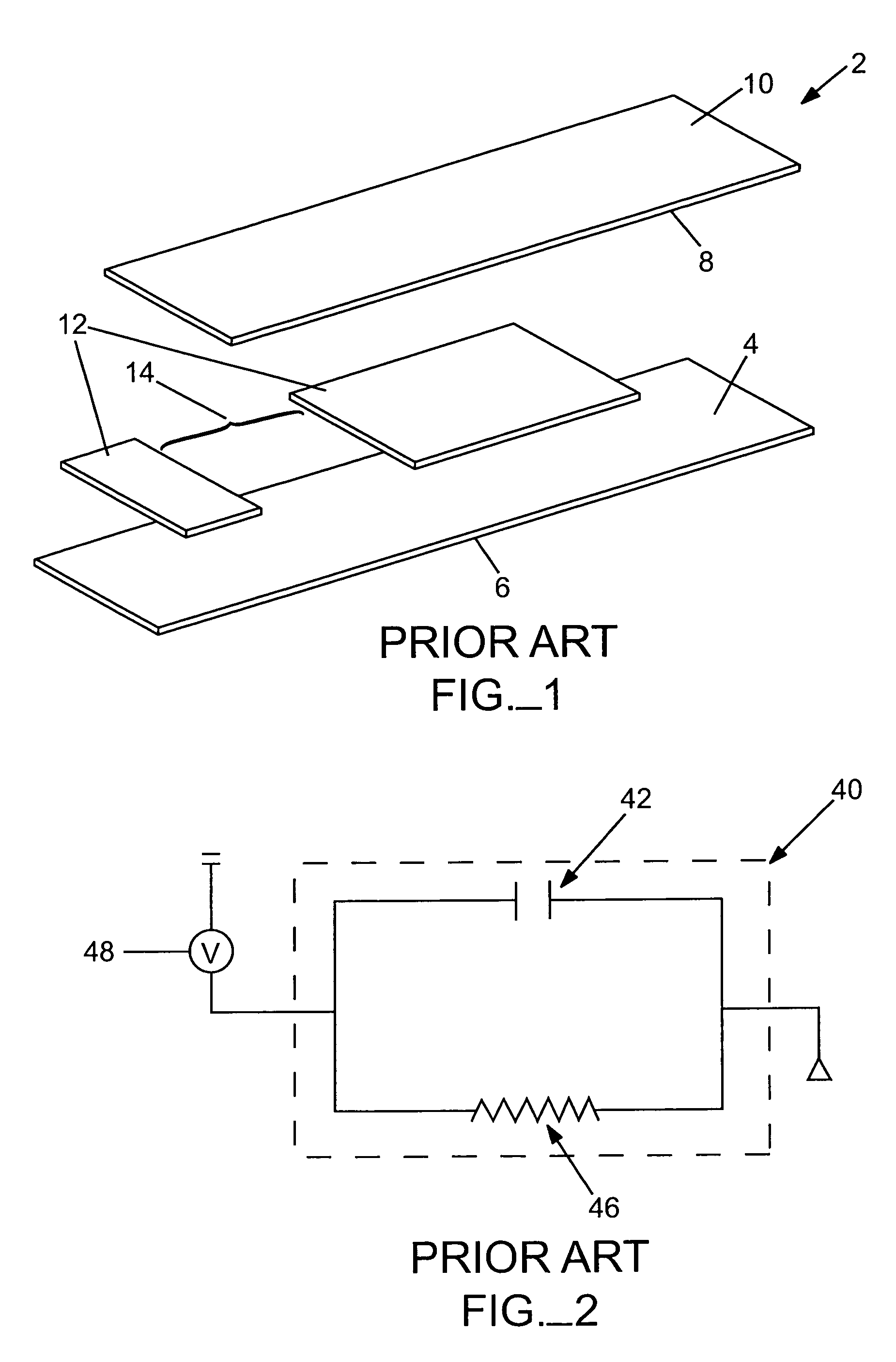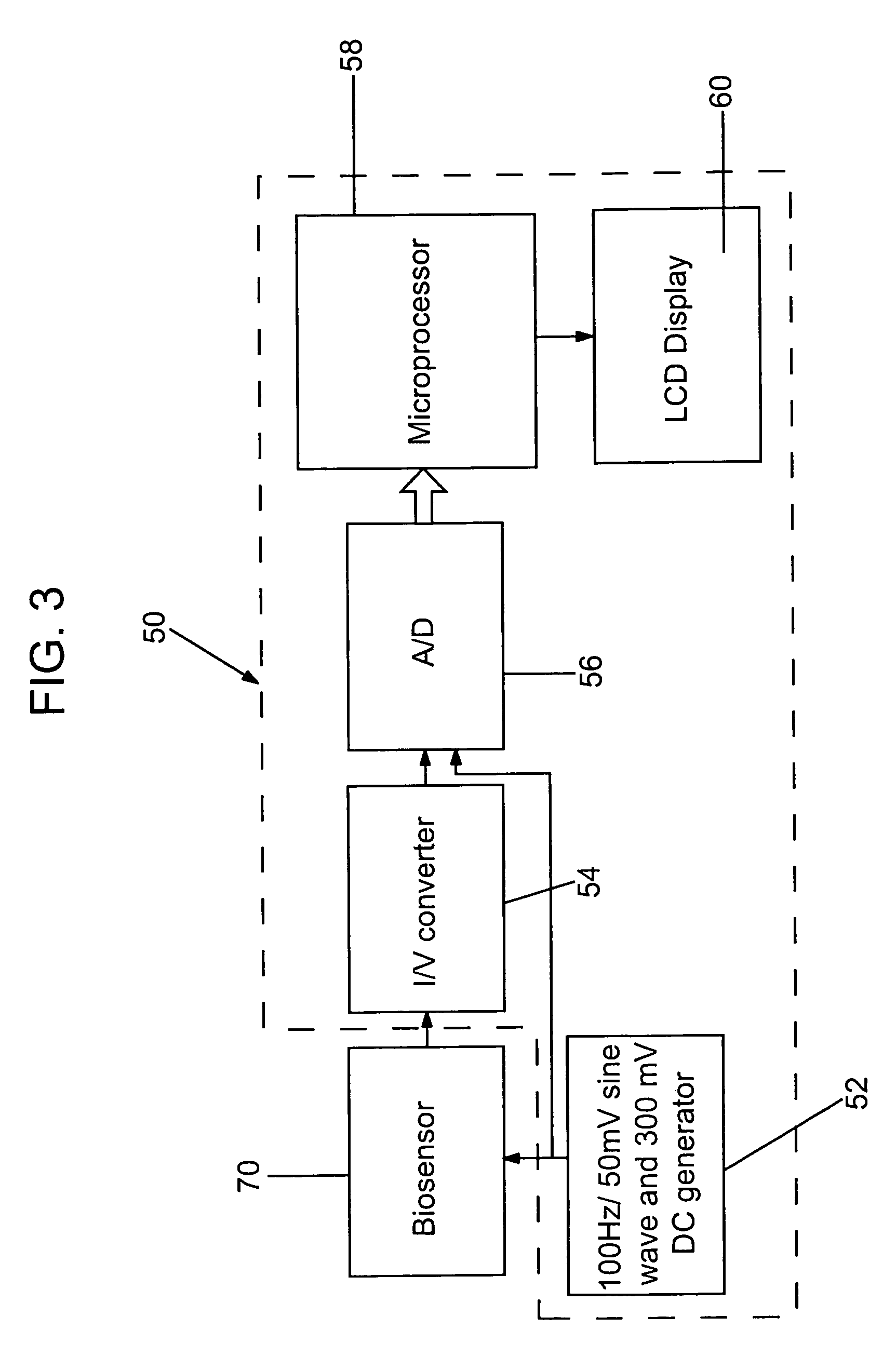Determination of sample volume adequacy in biosensor devices
a biosensor and sample volume technology, applied in the field of electrochemical determination of analyte in biological fluids, can solve the problems of insufficient amount of sample volume to be provided, serious and even life-threatening consequences, and misdiagnosis or improper treatmen
- Summary
- Abstract
- Description
- Claims
- Application Information
AI Technical Summary
Benefits of technology
Problems solved by technology
Method used
Image
Examples
examples
[0080]The following results have been observed in connection with the present invention. FIGS. 4–8 illustrate the variation in the experimental results of measurements made of test strips having an adequate sample volume (i.e., test strips having reaction zones completely filled with sample solution or material) and of test strips having less than an adequate sample volume (i.e., test strips having reaction zones half filled with sample solution or material). More particularly, measurements of the equivalent capacitance of the electrochemical cells and the sample solution resistance were made over selected periods of time during which the appropriate voltages were applied to the test strips. The following experimental results are offered by way of illustration and not by way of limitation. The results illustrated were collected by dosing the strips with 5 different blood donors, glucose range of 40–600 mg / dL, hematocrit of 20% and 70%, at room temperature.
[0081]FIG. 4 illustrates a ...
PUM
| Property | Measurement | Unit |
|---|---|---|
| thickness | aaaaa | aaaaa |
| thickness | aaaaa | aaaaa |
| thickness | aaaaa | aaaaa |
Abstract
Description
Claims
Application Information
 Login to View More
Login to View More - R&D
- Intellectual Property
- Life Sciences
- Materials
- Tech Scout
- Unparalleled Data Quality
- Higher Quality Content
- 60% Fewer Hallucinations
Browse by: Latest US Patents, China's latest patents, Technical Efficacy Thesaurus, Application Domain, Technology Topic, Popular Technical Reports.
© 2025 PatSnap. All rights reserved.Legal|Privacy policy|Modern Slavery Act Transparency Statement|Sitemap|About US| Contact US: help@patsnap.com



